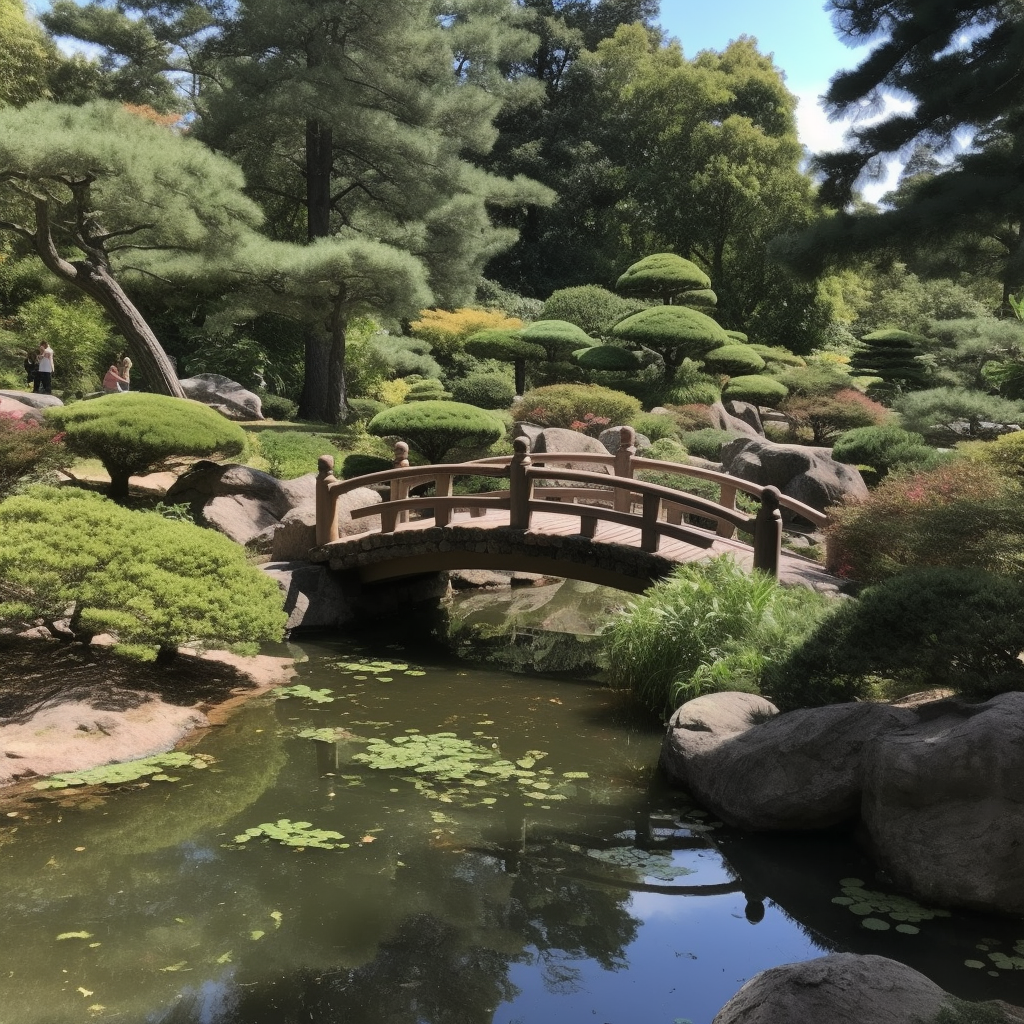Welcome to our journey through the enchanting world of Japanese gardens. In this 2000-word blog post, we will explore the history, design principles, and unique features of these breathtaking landscapes. Whether you’re an avid gardener, a lover of Japanese culture, or simply seeking a moment of tranquility, join us as we wander through some of Japan’s most iconic gardens.
The History of Japanese Gardens
Japanese gardens have a rich history that dates back over a thousand years. Originally inspired by Chinese landscape gardening, they have evolved through various styles and periods, each reflecting the religious, political, and cultural influences of the time.
Early Beginnings: Heian Period (794-1185)
During the Heian period, gardens were designed as extensions of aristocratic mansions, serving as places of leisure and contemplation. These early gardens were characterized by their large ponds, meandering streams, and carefully arranged stones, reflecting a deep appreciation for nature and an idealized vision of paradise.
Zen Gardens: Muromachi Period (1336-1573)
The arrival of Zen Buddhism in Japan during the Muromachi period had a profound impact on garden design. Zen gardens, or karesansui, were created as minimalist, dry landscapes that served as an aid for meditation. These gardens often featured carefully raked gravel or sand, symbolizing water, and were punctuated with strategically placed rocks and sparse vegetation.
Design Principles of Japanese Gardens
The beauty of Japanese gardens lies in their ability to evoke a sense of harmony, balance, and tranquility. Key design principles include:
- Miegakure (隠し見): This principle refers to the art of concealment and revealing, creating an experience where the garden’s elements are gradually unveiled as one moves through the space.
- Shakkei (借景): Borrowed scenery is the incorporation of the surrounding landscape into the garden’s design. This can include distant mountains, nearby trees, or even neighboring buildings.
- Wabi-sabi (侘寂): The concept of wabi-sabi embraces the beauty of imperfection, impermanence, and simplicity. Japanese gardens often feature irregular shapes, asymmetrical compositions, and natural materials that age gracefully.
Key Elements of Japanese Gardens
- Water: Water is an essential element in Japanese gardens, representing life and purity. Ponds, streams, and waterfalls are often incorporated into the design, creating a sense of flow and movement.
- Stones: Carefully selected and placed stones play a crucial role in Japanese gardens, symbolizing mountains, islands, or even mythical creatures. They provide structure and form to the garden, often arranged in groups of three to represent the Buddhist concept of heaven, earth, and humanity.
- Plants: The use of plants in Japanese gardens is intentional and purposeful, with each plant selected for its form, color, and seasonal interest. Traditional gardens often feature evergreen trees, flowering shrubs, and mosses that provide year-round beauty.
A Tour of Japan’s Iconic Gardens
Let’s take a virtual stroll through some of Japan’s most famous and captivating gardens.
Kenrokuen Garden (Kanazawa)
Kenrokuen is considered one of Japan’s “Three Great Gardens” and is renowned for its stunning beauty and sprawling landscape. Featuring a large pond, winding streams, and a variety of trees, flowers, and stones, Kenrokuen embodies the essence of a classic Japanese garden. Visit during different seasons to see the garden’s transformation, from vibrant cherry blossoms in spring to fiery autumn foliage.
Ryoanji Temple (Kyoto)
The Zen garden at Ryoanji Temple in Kyoto is perhaps the most famous example of a karesansui, or dry landscape garden. Its minimalist design consists of 15 carefully arranged rocks surrounded by meticulously raked white gravel. The garden’s layout is such that, from any vantage point, only 14 rocks are visible at once – a reminder of the Buddhist concept of imperfection and the belief that only through enlightenment can one perceive the “hidden” rock.
Korakuen Garden (Okayama)
Another of Japan’s “Three Great Gardens,” Korakuen is a spacious landscape garden known for its unique combination of traditional Japanese and Chinese design elements. The garden features a large pond, teahouses, and a hill that offers panoramic views of the garden and the surrounding city. With its vast lawns, rice fields, and seasonal flowers, Korakuen is a perfect example of borrowed scenery, seamlessly integrating the garden with its surroundings.
Kokedera (Moss Temple) – Saihoji (Kyoto)
Saihoji, commonly known as Kokedera or the Moss Temple, is a UNESCO World Heritage site and a true haven for moss enthusiasts. With over 120 different varieties of moss carpeting the ground, the garden has a unique, otherworldly atmosphere. The lush, green landscape is punctuated by a tranquil pond shaped like the character for “heart” (心), adding to the garden’s serene ambiance.
Adachi Museum of Art Garden (Shimane)
The garden at Adachi Museum of Art is a stunning fusion of art and nature. Designed to be viewed from within the museum, the garden serves as a living painting that changes with the seasons. Its meticulous maintenance and artful composition have earned it the title of “Best Japanese Garden” for several years. The garden features elements such as a white gravel garden, a pond with koi fish, and a pine tree grove, all framed by the museum’s floor-to-ceiling windows.
Final Thoughts
Japanese gardens are not just places of beauty, but also serve as a reflection of Japan’s history, culture, and spirituality. Each garden is a carefully crafted work of art, designed to evoke a sense of peace and harmony. Whether you’re physically strolling through these gardens or simply reading about them, we hope you’ve enjoyed this exploration of the enchanting world of Japanese gardens.

コメントを残す